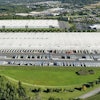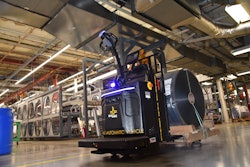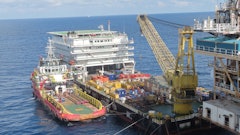
The food logistics industry refers to the movement of food and beverage products through supply chains. It encompasses transportation, storage and distribution and forms part of the wider global food system. All this movement means that the food logistics industry is responsible for around 6% of global emissions, which is a sizable contribution and something that clearly needs to be addressed.
What is the carbon footprint of the food logistics industry?
The food logistics industry is a cause for concern when it comes to the fight against climate change. The transportation of food and beverages in particular contributes greatly to the carbon footprint of the products we consume.
In fact, the transport emissions of food far exceed the transport emissions of other commodities. This is because the global food supply chain allows us to eat food grown all over the world and across every season. When you go into a supermarket these days, you can find whatever ingredient you want no matter what time of year it is.
But this convenience comes at a cost.
The transport of food involves one or more of the following types of transportation: shipping, air, rail or transportation by truck. In the United States, trucks are the most common type of food transportation, accounting for around 75% of food transportation in the country. Often these trucks are incredibly carbon intensive because they may also be temperature-controlled depending on the type of food they’re transporting. It’s hardly surprising therefore that food transportation is responsible for nearly half of all the emissions from road vehicles.
The United States in particular is one of the top food logistics emitters, though all high-income countries are guilty of disproportionately high emissions. Thankfully, manufacturers, retailers and consumers are becoming more switched on when it comes to the carbon footprint of the food and drink that ends up on our tables. There’s a clear trend amongst shoppers to buy local and seasonal produce.
But what about the food logistics industry, what can consumers, retailers and manufacturers do to address their greenhouse gas emissions?
How can I measure my company’s carbon footprint?
The first step in reducing your carbon footprint is to work out what it actually is. Once your company knows the most carbon emitting activities it takes part in then you can take action to remedy it.
A business's carbon footprint is the amount of greenhouse gasses that it produces, measured in tons of emitted carbon dioxide (CO2). Measuring your company’s carbon footprint is approached best when you break down your emissions into three different categories: scope emissions 1, 2 and 3.
Given the complexity of the food logistics industry, it can be hard to do this in-house. Many companies choose to hire a third party to carefully break down the scope emissions. These companies follow a methodical process by first analyzing data from a single year, preferably to the most recent calendar year with the most accurate and up-to-date information.
Activity data, otherwise known as activities being conducted in Scope 1, 2 and 3 will be collected from the company and other suppliers. Then the third-party company will calculate the emissions from each activity by multiplying the collected data by various emission factors.
How can I reduce my carbon footprint?
Once a company’s carbon footprint has been established, what steps can it take to reduce carbon emissions? Let’s take a look at some of the specific steps available to companies operating in the food logistics industry:
- Network optimization: Optimizing the food transport network means reducing the number of journeys and vehicles involved. This might mean transporting goods in bulk or planning the most energy-efficient transport routes. There are programs for example that calculate the most efficient route plans for you.
- Electric vehicles: One of the most effective ways to cut down on carbon emissions, particularly if a company’s transportation is heavily reliant on trucks, is to invest in electric vehicles. By swapping older gas-guzzling models for electric vehicles, a food logistics company will see a sizable reduction in their carbon footprint.
- Warehouse optimization: It’s not just the transportation methods that contribute to a company's carbon footprint, it’s also the warehouse facilities used to store food and beverages.
Thankfully, there are many simple methods that can be employed at such facilities to make them more energy efficient, like switching to LED light bulbs. Other easy actions include ensuring that light, heat and unnecessary equipment is turned off when not in use.
How to minimize the carbon footprint of food logistics companies These are just a few steps that food logistics companies can employ to get started on your journey to reducing your carbon footprint. But the most efficient and effective way forward is to enlist the help of a carbon accounting company who will be able to accurately calculate company emissions and recommend the best strategies for cutting down.



















